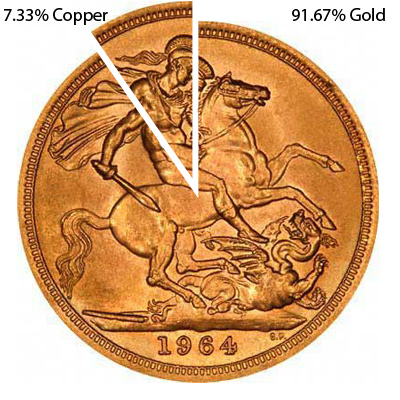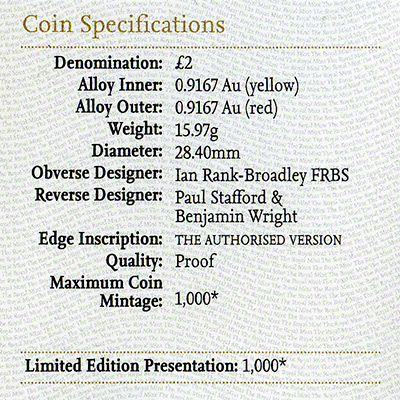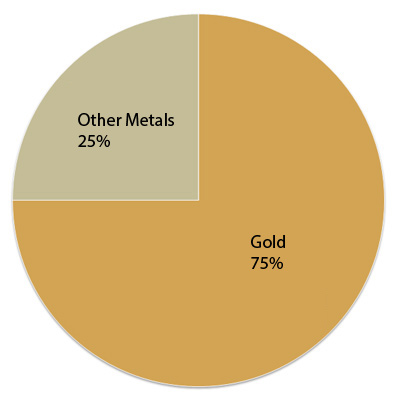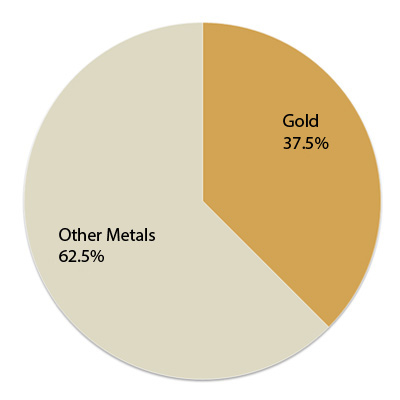
Red GoldRed gold is an alloy produced by mixing pure gold with copper, and omitting or reducing any silver content. Red Gold AlloysAn alloy is a homogeneous mixture of two or more metallic elements. Alloys are valuable because they can be engineered to possess different qualities which cannot be created with pure metals. The most common admetal components in gold alloys are copper and silver. Traditionally, most gold alloys were a mixture of all three metals, gold, silver, and copper, often with other trace metals. These mixtures usually produce a pleasant yellow colour similar to pure gold itself. Creating a red gold alloy is quite simple, omit the silver, and use just gold and copper. The result is a red colour, which varies only with the different proportions of the two metals. Some people prefer red gold compared with yellow gold. We don't! It is also possible to make "white gold" alloys, and other colours, by altering the proportions of the constituent components. Red Gold Coin AlloysMost gold coins, except for some modern bullion coins, are made of 90% or 91.67% gold. If copper is used as the sole other metal, the coin will appear red; if copper is used with silver, the result will be a pleasant yellow colour. Sometimes silver is used without any copper, and this produces a slightly greenish yellow, often called green gold. As gold coins were almost always produced in high carat alloys, no coins are or were made in "white gold" alloys. To create "white" gold alloys, or more accurately grey ones, the copper content is reduced or omitted. Nickel and palladium are very effective "whiteners" or "bleaching" agents. Nickel is the most commonly used because it produces a strong whitening effeect, although it tends to produce grey rather than white, it is much cheaper than palladium, but it also leads to discoloration over time. Palladium is the best whitener, but is exxpensive. Zinc, silver, and oother metals are often included, but do not usually produce a whitening effect. Platinum is a far better alternative. ComplaintsWe recently received a complaint from a customer, and an accusation of fraud, because five modern half sovereigns we supplied looked red and coppery. They do, because the Royal Mint uses a gold / copper alloy which looks to us rather cheap and nasty, rather than add a small percentage of silver, which would produce a pleasant yellow "gold" colour. We have told numerous Mint personnel about this on various occasions, dating back to about 2000. Of course, being the British Royal Mint, they know best, and refuse to listen to any advice from mere coin dealers, despite the fact that most dealers are in closer contact with collectors (some dealers are also collectors), and often have decades of experience and expertise, whereas many of the Mint officials know very little about coins, but perhaps have a business degree in Marketing or similar. Rather paradoxically, this customer originally ordered "our choice bullion" half sovereigns, which would possibly have been George V, and contained some silver, so looked a nicer yellow colour, but she wanted coins like her friend had previously bought, so paid extra to "upgrade" her order to modern "newly minted" ones. She would probably not appreciate the humour or irony of the situation, so for a quiet life, we have not informed her! Red, Pink, or Rose GoldThe terms pink gold or rose gold are often used instead of red gold. Basically, theese are all synonyms, although pink and rose gold both sound more romantic and desirable than red gold. It is also possible to reduce the harshness of the red colouring by additions of traces of silver. As little as one part per thousand of silver can produce a more pleasant red gold, or should I say less unpleasant? Other Gold ResourcesWe have a number of other pages which may be of interest to you.
|

Modern Gold Sovereign Alloy Content (22 Carat Gold)
 Royal Mint 2011 Bi-Metallic Gold Two Pound Coin Specification  18 Carat Gold Alloy Content  9 Carat Gold Alloy Content |